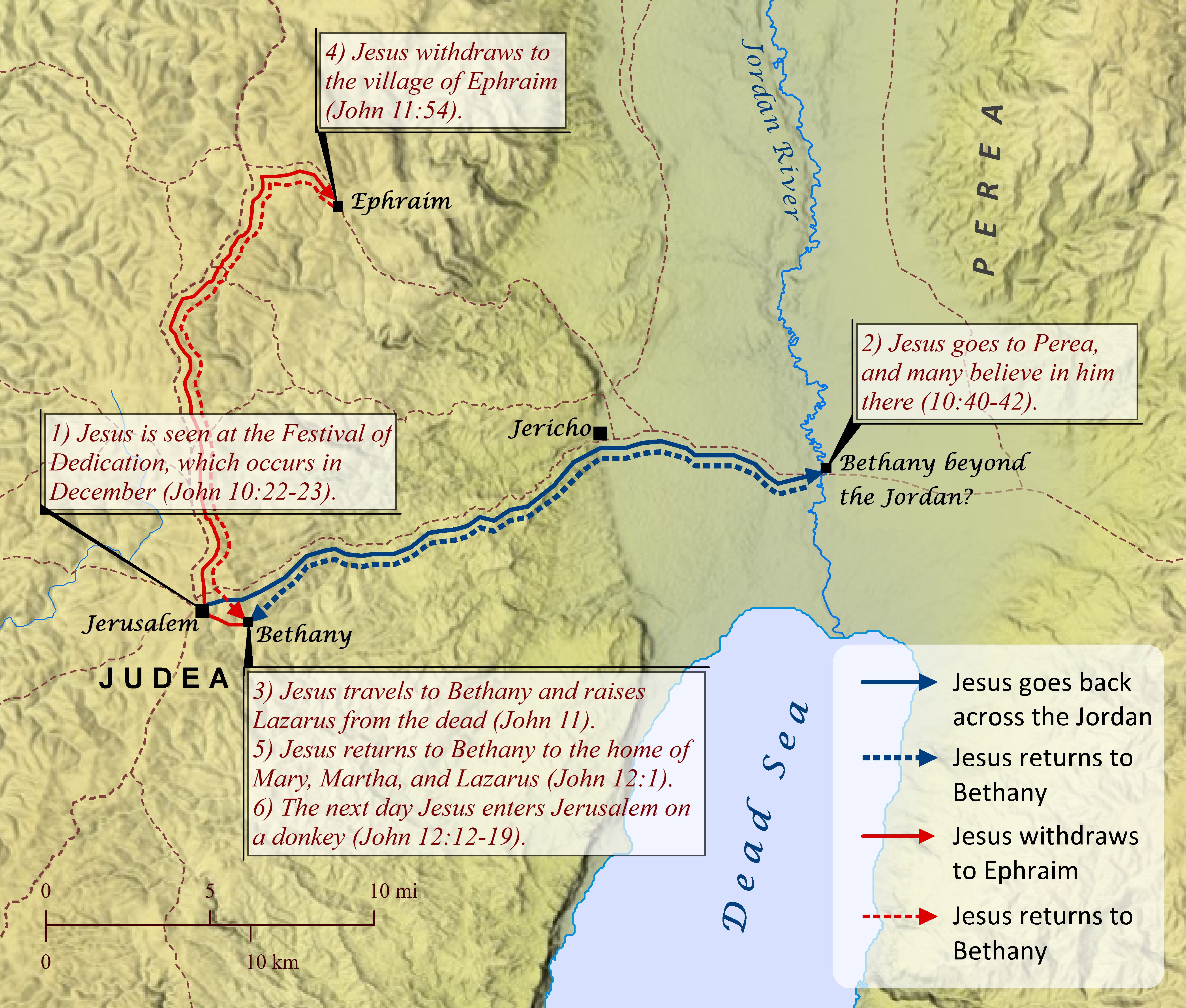Note: This view shows ‘verses’ which are not natural language units and hence sometimes only part of a sentence will be visible—click on any Bible version abbreviation down the left-hand side to see the verse in more of its context. Normally the OET discourages the reading of individual ‘verses’, but this view is only designed as a tool for doing comparisons of different translations—the older translations are further down the page (so you can read up from the bottom to trace the English translation history). The OET segments on this page are still very early looks into the unfinished texts of the Open English Translation of the Bible—please double-check these texts in advance before using in public.
AICNT [[Therefore]][fn] [They asked [him],[fn] “Who is the man who said to you, ‘Take up [[your bed]][fn] and walk’?”][fn]
OEB ‘Who was it,’ they asked, ‘that said to you “Take up your mat and walk”?’
LSB They asked him, “Who is the man who said to you, ‘Pick up your mat and walk’?”
WEBBE Then they asked him, “Who is the man who said to you, ‘Take up your mat and walk’?”
WMBB (Same as above)
NET They asked him, “Who is the man who said to you, ‘Pick up your mat and walk’?”
LSV they questioned him, then, “Who is the Man who is saying to you, Take up your bed and be walking?”
FBV “Who's this person who told you to carry your mat and walk?” they asked.
TCNT So they asked him, “Who is the man who said to yoʋ, ‘Pick [fn]up yoʋr mat and walk’?”
T4T They asked him, “Who is the man who said to you, ‘Pick it up and walk!’?”
LEB So they asked him,[fn] “Who is the man who said to you, ‘Pick up your mat[fn] and walk?’ ”
BBE Then they put to him the question: Who is the man who said to you, Take it up and go?
Moff They questioned him, "Who was it that told you, 'Lift it and walk'?"
Wymth "Who is it," they asked, "that said to you, `Take up your mat and walk'?"
ASV They asked him, Who is the man that said unto thee, Take up thy bed, and walk?
DRA They asked him therefore: Who is that man who said to thee, Take up thy bed, and walk?
YLT they questioned him, then, 'Who is the man who is saying to thee, Take up thy couch and be walking?'
Drby They asked him [therefore], Who is the man who said to thee, Take up thy couch and walk?
RV They asked him, Who is the man that said unto thee, Take up thy bed, and walk?
(They asked him, Who is the man that said unto thee/you, Take up thy/your bed, and walk? )
SLT Then they asked him, Who is the man having said to thee, Lift up thy couch, and walk?
Wbstr Then they asked him, What man is that who said to thee, Take up thy bed, and walk?
KJB-1769 Then asked they him, What man is that which said unto thee, Take up thy bed, and walk?
(Then asked they him, What man is that which said unto thee/you, Take up thy/your bed, and walk? )
KJB-1611 Then asked they him, What man is that which said vnto thee, Take vp thy bed, and walke?
(Then asked they him, What man is that which said unto thee/you, Take up thy/your bed, and walke?)
Bshps Then asked they hym: What man is that which sayde vnto thee, take vp thy bedde, and walke?
(Then asked they him: What man is that which said unto thee/you, take up thy/your bed, and walke?)
Gnva Then asked they him, What man is that which said vnto thee, Take vp thy bed and walke?
(Then asked they him, What man is that which said unto thee/you, Take up thy/your bed and walke? )
Cvdl Then axed they him: What man is that, which sayde vnto the: Take vp thy bed, and go yi waye?
(Then asked they him: What man is that, which said unto them: Take up thy/your bed, and go ye/you_all way?)
TNT Then axed they him: what man is that which sayde vnto the take vp thy beed and walke.
(Then asked they him: what man is that which said unto the take up thy/your bed and walke. )
Wycl Therfor thei axiden him, What man `is that, that seide to thee, Take vp thi bed, and go?
(Therefore they asked him, What man is that, that said to thee/you, Take up thy/your bed, and go?)
Luth Da fragten sie ihn: Wer ist der Mensch, der zu dir gesagt hat: Nimm dein Bett und gehe hin?
(So asked they/she/them him/it: Who is the/of_the person, the/of_the to/for you/to_you(sg) said has: Take your(s) bed and go hin?)
ClVg Interrogaverunt ergo eum: Quis est ille homo qui dixit tibi: Tolle grabatum tuum et ambula?
(Interrogaverunt therefore him: Who it_is he/that_one human who he_said to_you: Tolle pallet your(sg) and ambula? )
UGNT ἠρώτησαν αὐτόν, τίς ἐστιν ὁ ἄνθρωπος ὁ εἰπών σοι, ἆρον καὶ περιπάτει?
(aʸrōtaʸsan auton, tis estin ho anthrōpos ho eipōn soi, aron kai peripatei?)
SBL-GNT ἠρώτησαν ⸀οὖν αὐτόν· Τίς ἐστιν ὁ ἄνθρωπος ὁ εἰπών σοι· ⸀Ἆρον καὶ περιπάτει;
(aʸrōtaʸsan ⸀oun auton; Tis estin ho anthrōpos ho eipōn soi; ⸀Aron kai peripatei;)
RP-GNT Ἠρώτησαν οὖν αὐτόν, Τίς ἐστιν ὁ ἄνθρωπος ὁ εἰπών σοι, Ἆρον τὸν κράββατόν σου καὶ περιπάτει;
(Aʸrōtaʸsan oun auton, Tis estin ho anthrōpos ho eipōn soi, Aron ton krabbaton sou kai peripatei;)
TC-GNT Ἠρώτησαν [fn]οὖν αὐτόν, Τίς ἐστιν ὁ ἄνθρωπος ὁ εἰπών σοι, Ἆρον [fn]τὸν [fn]κράββατόν σου καὶ περιπάτει;
(Aʸrōtaʸsan oun auton, Tis estin ho anthrōpos ho eipōn soi, Aron ton krabbaton sou kai peripatei; )
Key for above GNTs: yellow:punctuation differs, red:words differ (from our SR-GNT base).
